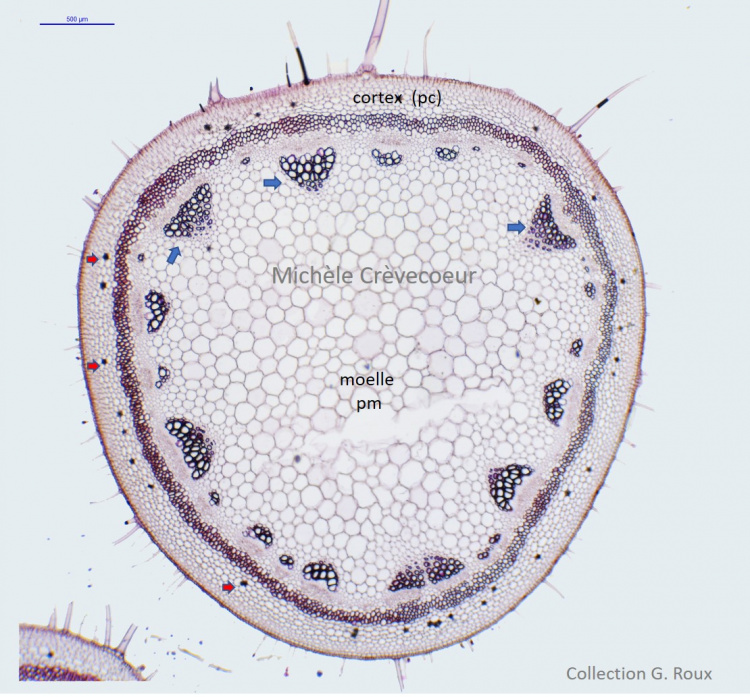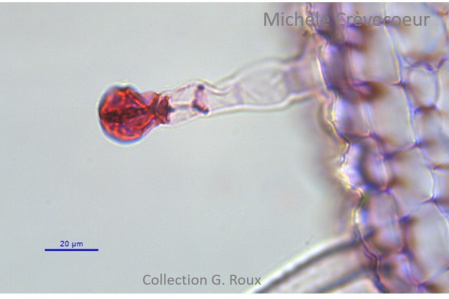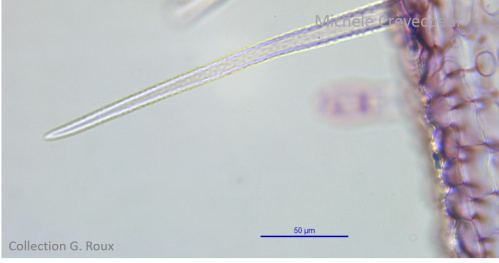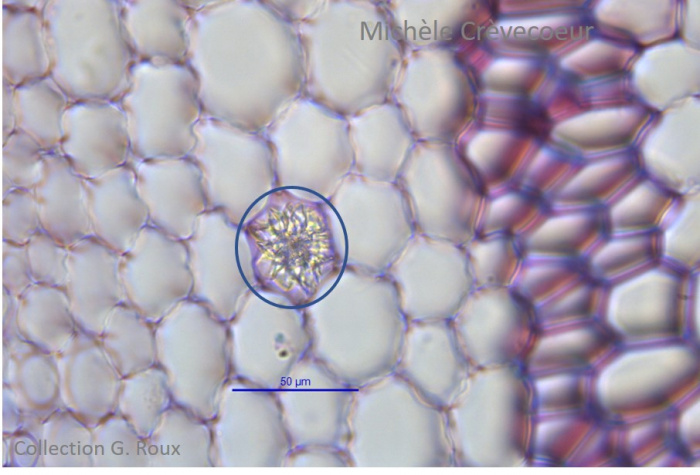Cross section through a stem of Pelargonium graveolens
Pelargoniums are a large and diverse group of evergreen and perennial plants, and most of true Pelargonium species are native to South Africa such as P. graveolens from which scented pelargoniums were developed. They were cultivated for centuries for their scented leaves and for their medicinal properties.
The section from Georges Roux collection was stained with safranin and hemalum and mounted with oxidized balm. The year of its realization is august 1940.
Global view of the cross section showing characteristics of a young dicotyledon stem: a large pith (medullar parenchyma) constituted of polygonal cells with thin cellulosic wall; a cortex that consists of a few rows of parenchyma cells (cortical parenchyma); layers of sclerenchyma and vascular bundles on a single ring at the periphery of the pith. Blue arrows indicate the xylem with protoxylem located towards the center. Numerous glandular and non – glandular trichomes are observed at the epidermis level. Red arrows indicate calcium oxalate crystals distributed through the whole cortex (see details below).

Example of glandular trichome .
Glandular trichomes are filled with aromatic oils and they make the plant fragrant when touched, releasing a powerful lemony scent. Graveolens means in Latin “whose smell is strong”.

Example of non – glandular trichome
They are generally long with a pointed tip.

Portion of the cortex with a parenchyma cell containing an aggregate of calcium oxalate crystals called druse. Layers of sclerenchyma on the right constituted of cells with thick walls, pink stained
